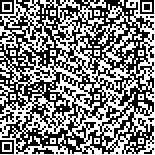赵秋云,林强,杨婷,夏鹏,李雪萍.减重步行训练及肌张力对脑卒中患者下肢运动功能恢复的影响[J].中华物理医学与康复杂志,2018,40(11):821-825
扫码阅读全文

|
| 减重步行训练及肌张力对脑卒中患者下肢运动功能恢复的影响 |
|
| |
| DOI: |
| 中文关键词: 脑卒中 减重步行训练 运动功能 肌张力 |
| 英文关键词: Stroke Body weight supported treadmill training Motor function Muscle tension |
| 基金项目:南京市医学科技发展项目计划(YKK17127) |
|
| 摘要点击次数: 8010 |
| 全文下载次数: 8196 |
| 中文摘要: |
| 目的 观察减重步行训练对脑卒中患者下肢功能的改善作用,并分析股四头肌张力对减重步行训练疗效的影响。 方法 采用随机数字表法将36例脑卒中恢复期患者分为减重训练组及常规治疗组,每组18例。常规治疗组患者给予常规康复训练,减重训练组患者同时辅以减重步行训练。于治疗前、治疗4周后分别采用Fugl-Meyer运动功能量表(FMMS)、Berg平衡功能量表(BBS)、Holden步行能力分级对患者下肢运动功能、平衡功能及步行能力进行评定。同时本研究根据患者股四头肌改良Ashworth痉挛分级结果,将减重训练组患者划分为轻度痉挛亚组和重度痉挛亚组,进一步对比各疗效指标结果差异。 结果 治疗前2组患者下肢FMMS评分、Berg评分及步行能力Holden分级组间差异均无统计学意义(P>0.05)。治疗后2组患者上述各项疗效指标结果(包括下肢FMMS评分、Berg评分及Holden分级)均较治疗前明显改善(P<0.05);进一步比较发现,治疗后减重训练组患者下肢FMMS评分、Holden分级均较常规治疗组明显改善(P<0.05);治疗后2组患者Berg评分组间差异仍无统计学意义(P>0.05)。轻度痉挛亚组患者治疗前、后下肢FMMS评分改善值(△下肢FMMS评分)、步行能力改善值(△Holden分级)均显著优于重度痉挛亚组(P<0.05);轻度痉挛亚组患者治疗前、后Berg评分改善值(△Berg评分)与重度痉挛亚组间差异无统计学意义(P>0.05)。 结论 减重步行训练能显著改善脑卒中患者下肢运动功能、平衡功能及步行能力,较高的肌张力可能对减重步行训练疗效具有不利影响。 |
| 英文摘要: |
| Objective To observe the effect of body weight supported treadmill training (BWSTT) on function of lower extremities in stroke survivors, and analyze the influence of quadriceps femoris muscle tone on the therapeutic effect of BWSTT. Methods Thirty-six stroke survivors were randomly divided into a BWSTT group and a conventional therapy group (CT group) according to a random number table, each of 18. Both groups were given routine rehabilitation training, while the BWSTT group was additionally provided with BWSTT for 4 weeks. Before and after the treatment, Fugl-Meyer assessment for lower extremity (FMMS-LE), Berg balance scale (BBS) and Holden walking function rating scale (Holden) were used to assess the motor function of lower extremities, balance function and walking ability of both groups. Meanwhile, the patients in BWSTT group were further divided into a mild-spasm subgroup and a seriously-spasm subgroup according to the modified Ashworth scale assessment result of quadriceps muscle, and the results of their efficacy indexes were further compared. Results No significant difference was found in the average FMMS-LE, Berg and Holden scores between the BWSTT group and CT group before the treatment (P>0.05). However, significantly improvement was found in all the above measurements of both groups after the treatment (P<0.05). Further comparison found that the FMMS score of the lower extremities and Holden grading in the BWSTT group improved more significantly compared with the CT group (P<0.05), while no significant differences were found in the Berg score between the two groups (P>0.05). The change of FMMS (△FMMS) and Holden (△Holden) after treatment in the mild-spasm subgroup increased more significantly compared with those in the seriously-spasm subgroup, but no significant differences were observed regarding the change of Berg (△Berg) between the two subgroups. Conclusions BWSTT can significantly improve the motor function of lower extremities, balance function and walking ability of stroke survivors. However, hypertone of quadriceps femoris might have adverse effects on the therapeutic effect of BWSTT. |
|
查看全文
查看/发表评论 下载PDF阅读器 |
| 关闭 |
|
|
|